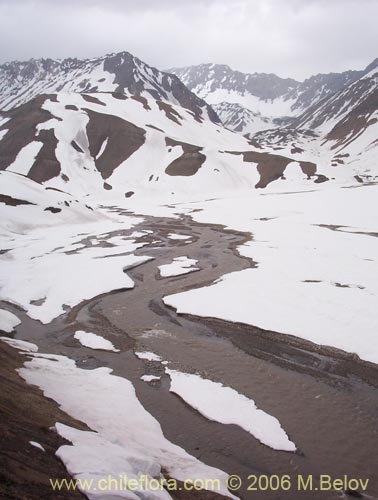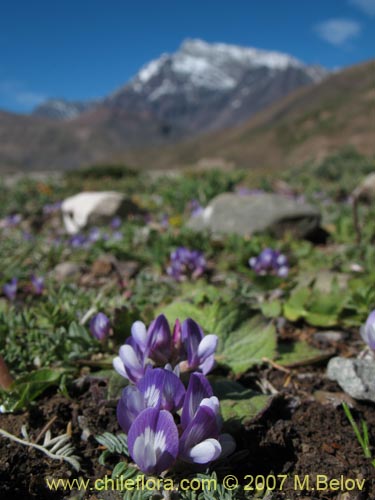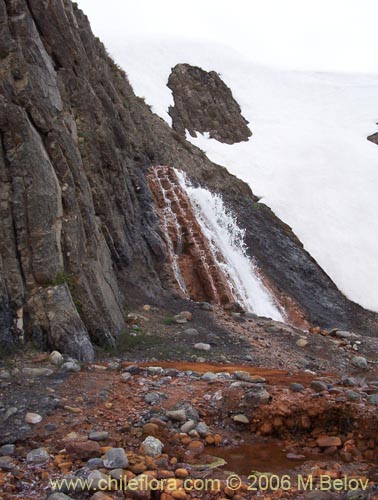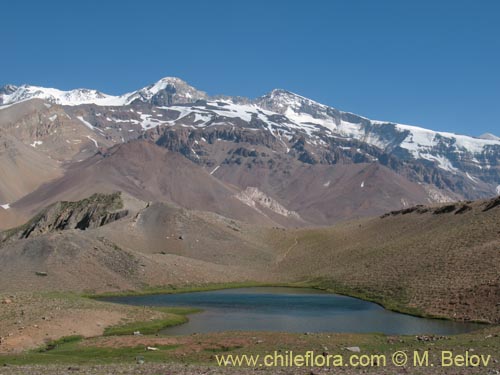than any other country in the world*
Stop ISRAELI WAR CRIMES and GENOCIDE

|
ISRAEL MURDERED MORE CHILDREN
than any other country in the world* Stop ISRAELI WAR CRIMES and GENOCIDE Your Seeds Source...
| ||
| ||
From 2009 the entry to the hot springs is not free any more, and it costs about 6 USD per person to get in. Luckily, after you pay your fee you are on your own, and the nature around and the hot springs are still very wild looking, without any facilities. The owner pretends to construct something there, and that would be most unfortunate, because these hot springs are the last hot springs in the Santiago area which are not yet modified by humans.

The road begins to climb gently amids the fields of Acaena magellanica. After a short zigzag you reach a flat stretch of road and that is the place (33°37'55.76"S 69°55'36.16"O) where many interesting species can be found: Discaria nana, a very compact shrub just a few centimeters high, studded with small white flowers in early spring, Jaborosa laciniata a strange plant from the solanaceae family the flowers of which are almost black. Calceolaria filicaulis ssp. filicaulis is very abundant from here on, as well as Tropaeolum polyphyllum.
The road finally reaches the Yeso river and one has to wade it. For a 4-wheel-drive truck this is obviously not a problem at all, but it maybe a challenge for smaller cars, especially if you come early in the season when the snow is melting. Before you reach the hot springs area, you may consider giving a short detour to an area to the left. Look out especially for the place where the road begins a short climb bordering the slope. There (33°36'40.14"S, 69°55'25.36"O) you can find Menonvillea cuneata and Nassauvia pyramidalis, both rather strange-looking plants. Nastanthus spathulatus is a dominant species in the area and you can see it almost everywhere. Returning somewhat, in spots where the slope begin to rise (for instance at 33°36'50.41"S 69°55'2.94"O), you can see Sisyrinchium junceum ssp. colchaguense, Zoellnerallium andinum, several Chaetantheras, and a small Fabaceae 1017 which we were not able to identify yet.

The hot springs is an excellent area to take a rest and to acclimatize to the altitude of 2900 m. There are several pools with temperature ranging from +38º C to +28º C and also a gushing water from the rock with only +25º C.

The water is very salty and one may spend hours there, admiring the views of the surrounding mountains and glaciers, Marmolejo, which reaches just over 6000 m and the mountain range with altitudes of 4500 – 5000 m. which separates Chile from Argentina. The downside is that it is almost always windy, and getting out of the hot water feels like hell.

If you you feel strong and ready for some adventure and stunning landscapes, you can do a short trekking circuit of about 4 km roundtrip and 3 hours. The beginning of trail can be seen from the hot springs where there is a green area towards NW from the hot springs. Climb there, then continue along the trail. One species is especially noteworthy, Schizanthus coccineus which grows about 500 meters up the trail on the left hand-side. Zoellnerallium andinum is everywhere, and in the more humid areas you will see Calceolaria filicaulis ssp. filicaulis. Continue along the trail which descends now towards the river, and goes flat for about one kilometer. Look out for cascading waterfall on your left. This waterfall comes from a small lake up, and you should begin your climb there (just past the waterfall). You will climb on the wet Vegas, where you can see the high-altitude hydrophile vegetation - Gentiana prostrata, Lobelia oligophylla, Wernerias, Carex, Calceolarias.

The lake is some 200 meters higher at an altitude of 3200 meters. The vegetation there is quite similar and does not present any new species. If you are looking for plants and not for landscapes you might as well return the way you came without climbing to the lake.

From the lake there is a trail going straight south which will take you down to the hot spring area.